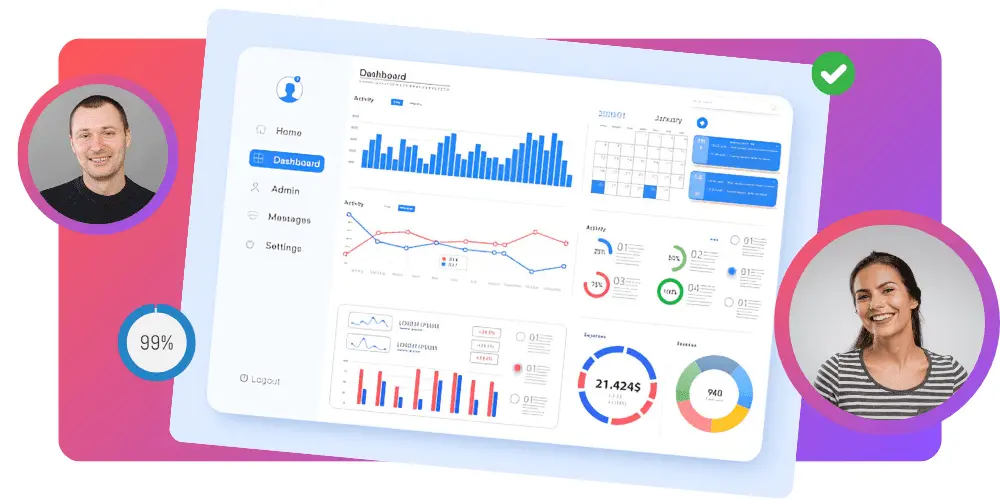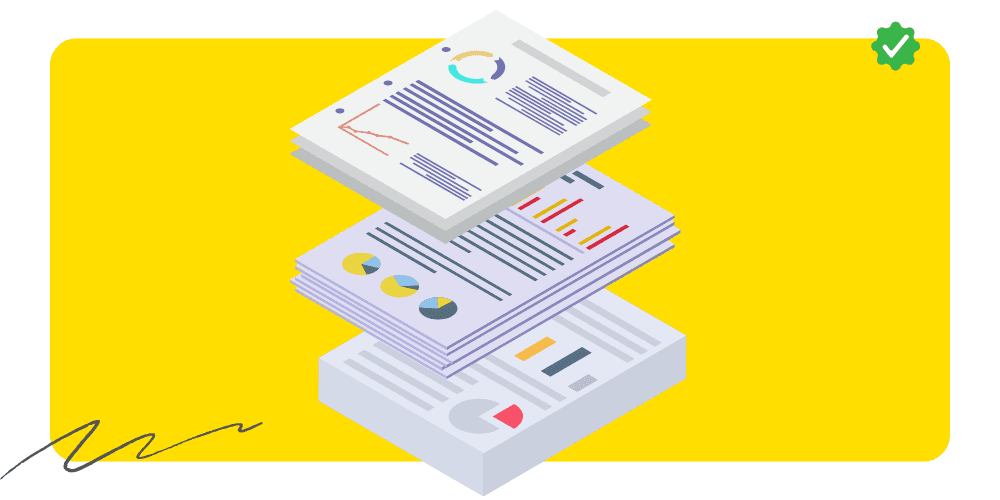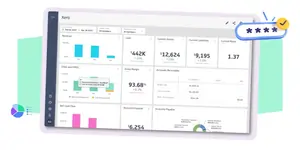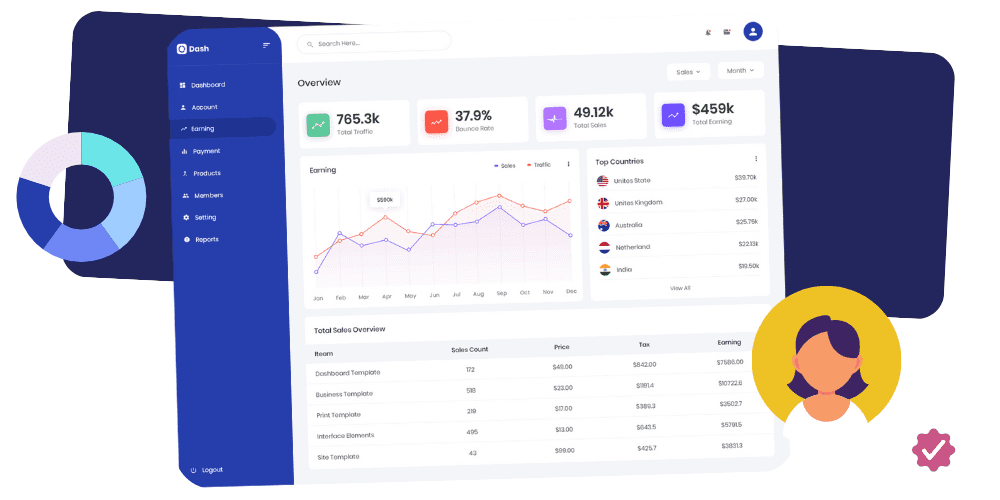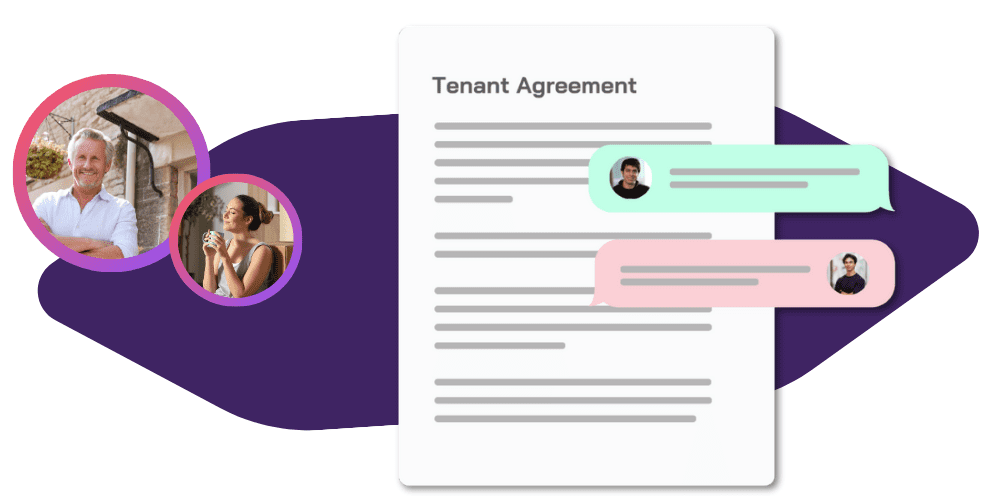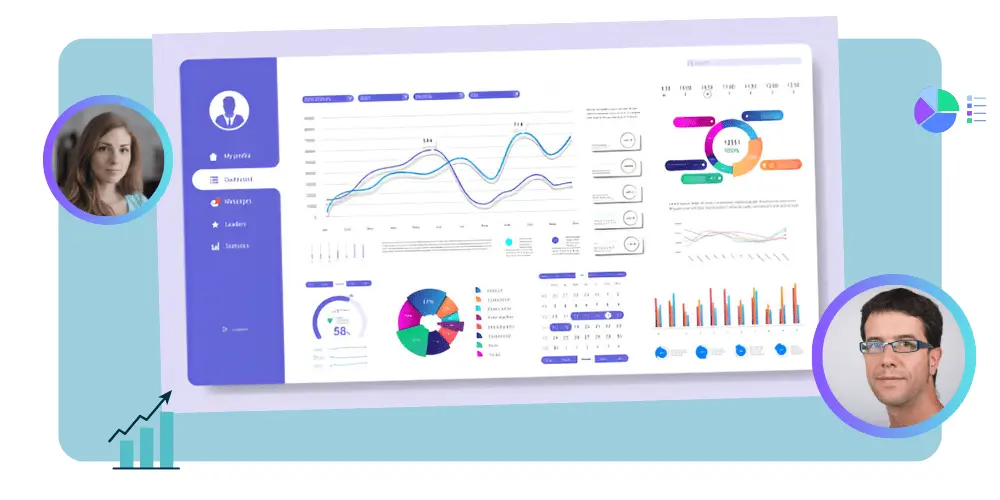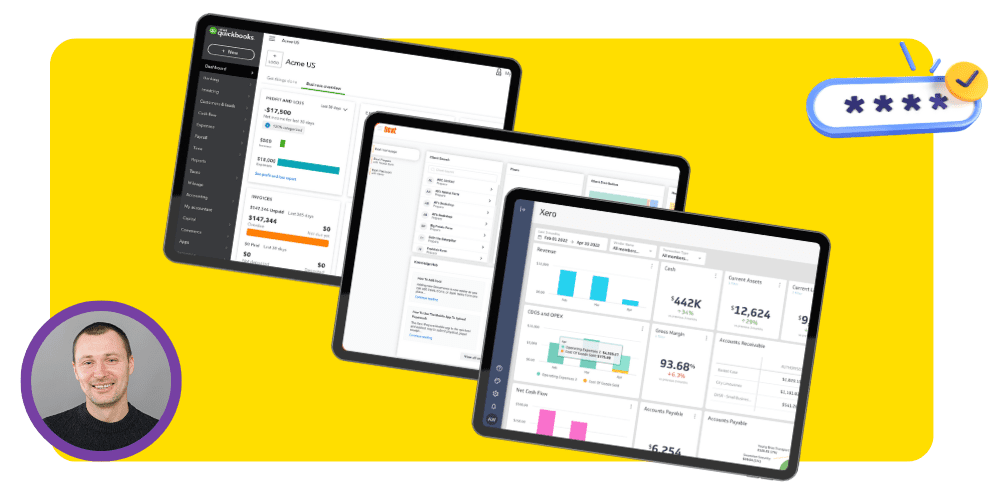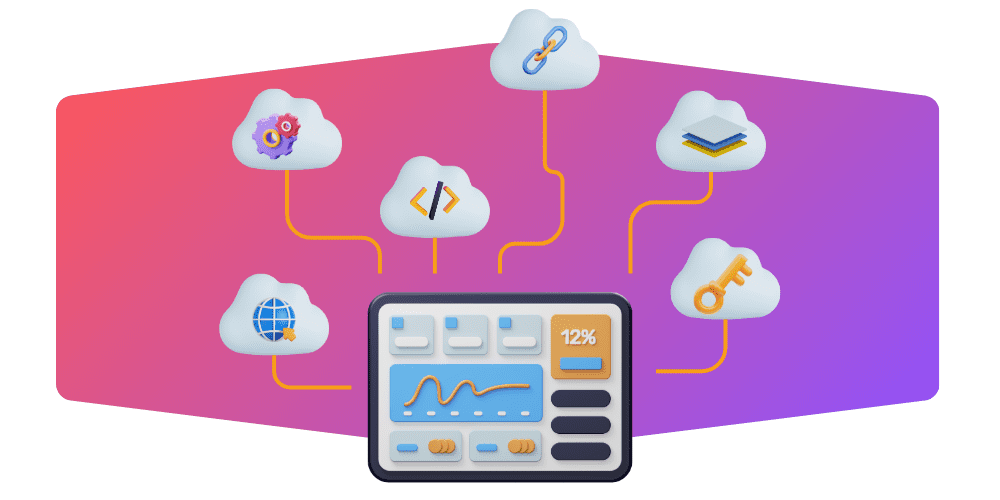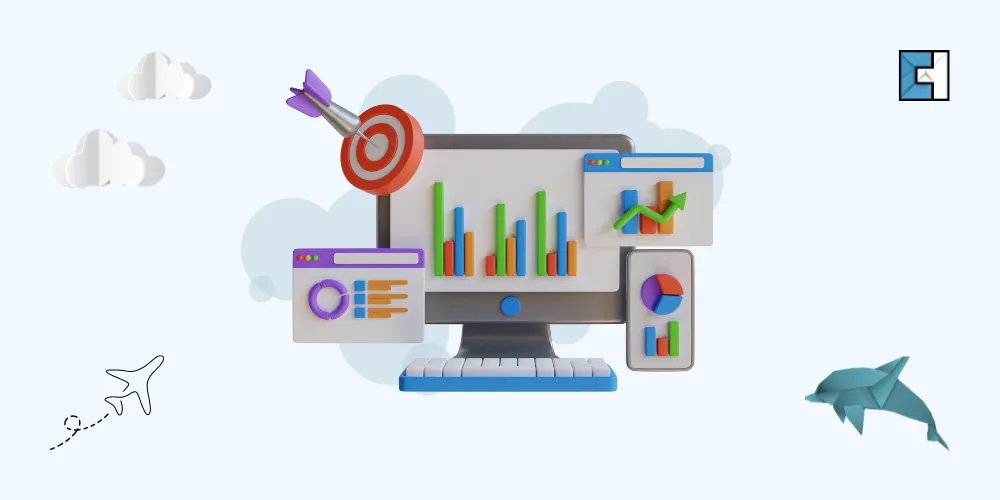The Statement of Financial Position, also known as a balance sheet in simpler terms, is a crucial financial document for businesses. This statement comes in handy when managing a business because it balances all assets against liabilities and owners’ equity, providing a clear overview of the company’s financial position.
With the Statement of Financial Position, a business owner gains insight into what assets they possess and what liabilities they are responsible for paying back. In other words, this statement displays the company’s net financial position, giving a snapshot of its overall financial standing. The Statement of Financial Position plays a significant role in preparing annual accounts and is a key component of financial statements.
Small business owners often juggle multiple responsibilities, and accounting may take a backseat in the chaos. However, even if your financial position statement appears healthy, underlying issues can go unnoticed until it’s too late. Knowing your company’s financial position is crucial for long-term stability.
Definition of Statement of Financial Position
A company’s situation is commonly assessed in terms of potential risk and financial stability using a statement of financial status. An organisation’s assets, liabilities, and equity as of a certain date are listed on the balance sheet, often called the statement of financial position.
In other words, it offers a summary of a business’s assets, obligations, and ownership details as of a particular date. This may be compared to a snapshot from a certain time in the company’s history.
What Does the Statement of Financial Position Look Like
There are several ways to create a Statement of Financial Position, but the most common balance sheet format is divided into two columns.

The first column lists all of the business’s balance sheet assets. The most liquid assets, such as cash, are positioned at the top, while the least liquid assets, like real estate, are at the bottom. A balance sheet total for assets is calculated at the end of this section.
The second column covers liabilities and equity. This section includes all debts, such as credit cards and loans, and is summed up to give a total liabilities figure.
Following liabilities is the equity section, representing the difference between balance sheet items like assets and liabilities. The accounting equation used in this statement is:
Assets = Liabilities + Owners’ Equity
If the result is positive, it shows you have “equity” in the company. In other words, if the business were sold today, you would walk away with some cash. This simple balance sheet formula is key to understanding your company’s financial health.
For those wondering, “What does a balance sheet show?” it offers a clear snapshot of the company’s financial standing at a specific point in time. For example, balance sheet analysis helps assess whether the company has more assets than liabilities, which is a sign of financial strength. Understanding a balance sheet in this way enables business owners to make informed decisions.
Samples of Balance Sheets
A balance sheet is a financial document that provides a snapshot of a business’s financial health by listing its assets, liabilities, and owner’s equity. Below are a few examples to help you understand the structure and how you can present your company’s financial standing.
| Assets | Amount | Liabilities & Equity | Amount |
| Current Assets | Current Liabilities | ||
| Cash and Cash Equivalents | £20,000 | Accounts Payable | £5,000 |
| Accounts Receivable | £10,000 | Short-term Loan | £2,000 |
| Inventory | £15,000 | Other Current Liabilities | £1,000 |
| Total Current Assets | £45,000 | Total Current Liabilities | £8,000 |
| Non-Current Assets | Non-Current Liabilities | ||
| Property, Plant, and Equipment | £50,000 | Long-term Debt | £10,000 |
| Intangible Assets | £5,000 | Total Non-Current Liabilities | £10,000 |
| Total Non-Current Assets | £55,000 | Owners’ Equity | |
| Common Stock | £30,000 | ||
| Retained Earnings | £52,000 | ||
| Total Owners’ Equity | £82,000 | ||
| Total Assets | £100,000 | Total Liabilities & Equity | £100,000 |
These samples of balance sheets offer a practical guide for small businesses to follow when preparing their own balance sheet examples. By including such details, companies can provide a clear picture of their financial position to stakeholders.
Components of the Statement of Financial Position
Financial statements have three main components: assets, liabilities, and owners’ equity. The Statement of Financial Position often called the balance sheet, is divided into two sections: assets and liabilities.
Assets
In financial accounting, assets represent the resources that a business owns or manages. These resources have value and can generate economic benefits. Assets can be converted to cash or used to improve a company’s financial standing.
In a typical business balance sheet, assets are classified as current assets and non-current assets.
- Current assets include cash, accounts receivable, inventory, and short-term investments. These assets are expected to be consumed or converted into cash within a year.
- Non-current assets (also known as long-term assets) have a lifespan exceeding one year. Examples include property, plant, and equipment, intangible assets such as patents, and long-term investments. These assets are crucial for the company’s future operations and growth.
Understanding how assets are categorised in the statement of financial position helps clarify the company’s liquidity and long-term solvency.

Liability
A liability refers to a company’s future economic obligations. These debts or obligations are typically incurred through previous transactions or events. On the balance sheet, liabilities are listed on the right-hand side, under the balance sheet, accounts for debts. They can be divided into current liabilities and non-current liabilities.
- Current liabilities include short-term debts that must be paid within 12 months, such as accounts payable, accrual accounting entries, and short-term payable loans.
- Non-current liabilities include debts or obligations that extend beyond a year, such as long-term debt and mortgages.
Understanding liabilities is critical for financial analysis and helps gauge a company’s financial stability and risk. GAAP and IFRS standards guide how liabilities should be reported on the Statement of Financial Position.
Liabilities are essential to understanding how much the business owes and how its debt affects financial health. By comparing assets and liabilities, one can see the balance of a company’s obligations relative to its resources, which forms part of the balance sheet equation. A clear accounting list of accounts for current and non-current liabilities helps ensure accuracy and transparency in financial reporting.
Owner’s Equity
Owners’ equity represents the ownership interest in the company, calculated by deducting liabilities from assets. In a business balance sheet, owners’ equity may include shareholders’ equity, retained earnings, and other reserves. For a corporation, this section might list common stock, preferred stock, and treasury stock. Equity is presented as the owners’ or members’ capital accounts in a partnership or sole proprietorship.
The book value of a company is a key indicator of its overall worth. For non-profit organisations, this section is known as the net assets section and reflects assets after all liabilities are paid.
Example of the Accounting Equation
The accounting equation is critical to understanding the structure of the Statement of Financial Position. This equation can be expressed as:
Assets = Liabilities + Owners’ Equity
This formula ensures that both sides of the balance sheet are always equal, accurately representing the company’s financial health. The same principle applies to a consolidated statement of financial position, which includes subsidiaries but on a larger scale.
The Formula of the Statement of Financial Position
The fundamental accounting equation and the statement of financial position have similar forms: Asset = liabilities + owners equity.

The formula will be Assets = Liabilities + Stockholders’ Equity for a firm.
The formula for a nonprofit organisation is Assets = Liabilities + Net Assets.
How to Make a Statement of Financial Position?
Financial statements are produced by integrating accounting data to provide a standardised set of financials. The completed financial statements are sent to management, lenders, creditors, and investors, who use them to evaluate the company’s performance, liquidity, and cash flows. The following procedures are part of the process of making financial statements (the exact order may vary from company to company).
Cash Flow & Liquidity: The Keys to Growth in Businesses
Verify Receiving Supplier Bills
Compare the receipt log to accounts payable to verify receipt of all supplier invoices. Your balance spreadsheet should include the expense of any outstanding invoices.
Check the Release of Customer Invoices
To confirm that all client invoices have been issued, compare the shipping record to the receivables. Invoices that are not full must be filed.
Build Up Unpaid Payroll
Accumulate an expense for any wages earned but not yet paid as of the end of the reporting period.
Determine Depreciation
Calculate the depreciation and amortisation expense for each fixed asset included in the accounting sheet. This will ensure the balance sheet reflects the current value of long-term assets.
Valuable Stock
Use a physical inventory count or another method to ascertain the ending inventory balance. Using this financial information example, determine the cost of the goods sold and then record your findings in the accounting books.
Reconcile bank accounts
Perform a bank reconciliation and make all necessary modifications in journal entries to align the accounting records with the bank statement.
Post Account Balances
Post all balances from subsidiary ledgers to the main ledger.
Review the accounts
Examine the accounts on the balance sheet and use journal entries to change the account balance.
Examine the finances
The financial statements should be printed out and then checked for any errors. There will undoubtedly be a number of errors, so write journal entries to correct them and reprint the financial statements. Continue until every error has been corrected.
Accumulate the Income Taxes
Using the updated income statement as a guide, accrue an income tax expense.
Close down the Accounts
Open the subsidiary ledgers for the upcoming reporting period and close all current ledges.
Itemise the Financial Statements.
The finished financial statements should be printed as well. Create footnotes for the statements depending on this information. Last but not least, compose a cover letter that emphasises critical data from the financial accounts. After that, package up this information and distribute it to the customary set of recipients.
Does the Statement of Financial Position Always Balance?
The Statement of Financial Position (or balance sheet) must always be in balance. This is a fundamental principle of accounting, where assets must equal the total of liabilities plus owners’ equity. The balance sheet explained through this lens helps ensure that the financial statement is correct.
The balance sheet equation reflects the basic premise that a company’s resources are acquired either through borrowing (liabilities) or from the owners’ investments (equity). A balance sheet example would show how these components work together to present an accurate picture of a business’s financial standing.
There are generally three ways a company can acquire new assets:
- Purchasing assets using existing or new resources.
- Borrowing funds through loans or mortgages to purchase assets.
- Using the owners’ or shareholders’ funds to invest in the company.
All these avenues follow the double-entry accounting system, ensuring that both sides of the Statement of Financial Position remain balanced at all times. If you ever find that the statement does not balance, an error in the accounting records may need to be addressed.
Why is a Balance Sheet Important?
Understanding what a balance sheet is and its importance is crucial for any business owner. It serves as a key document for evaluating the financial stability of your company. Many entrepreneurs only realise the risks their businesses face when it’s too late because they don’t maintain an accurate Statement of Financial Position.
Neglecting to monitor the balance sheet can lead to trouble, especially if the ratio of assets to liabilities is less than ideal. If you find that your assets do not sufficiently cover your liabilities, it may be time to take strategic action to improve your financial position. This is a great example of why a balance sheet is important.
Additionally, the balance sheet informs banks about your company’s eligibility for loans or credit. Without a comprehensive Statement of Financial Position, banks may hesitate to provide financial support. Even if they do, they may be reluctant to offer larger loans without a clear sample balance sheet that shows a healthy financial standing.
From an investor’s perspective, a balance sheet offers insights into the company’s cash reserves and overall financial health. Investors are more likely to fund businesses that show strong financial growth and liquidity on their balance sheets because it indicates future success and expansion.
Moreover, you can use the balance sheet and income statement together to spot patterns in your company’s financial data, especially when analysing interactions with clients and suppliers. Knowing how to read a balance sheet helps business owners make informed decisions, whether about investment opportunities, operational improvements, or financial risks.
How to Use Statement of Financial Position
To attract investors and loans
People can easily comprehend your company’s financial situation by looking at your balance sheet. To assess the financial health and creditworthiness of a firm, the majority of lenders want a balance sheet.
Your financial accounts might show lenders that you are likely to repay your bills on time if you seek a loan. Balance sheets are used by potential investors to determine where their money will go and when they may expect to receive a return.
To Decide on Long-Term Business Strategies
By monitoring your company’s finances, you may be able to see possible problems before they grow into greater ones. Cash flow issues are the primary cause of small business failure and may be immediately addressed and resolved with accurate and current balance sheets.
Small business entrepreneurs typically overpay on initial expenses, undervalue the value of planning, and wait too long to get finance. By developing a solid company strategy and using financial statements to direct business choices, these typical financial issues may be avoided.
Boost Your Business Cash Flow with Forecasting and Smart Planning
To Avoid Potential Risks
The basic goal of a business is to generate a profit. A successful business should have growing equity. By looking at certain assets and liabilities on your balance sheet, you can see if your business is succeeding in that. If not, you can figure out why.
For instance, it could add unnecessary risk if the vast bulk of your assets is stocked. Unsold stock can quickly become a major issue.
To Make Tax Preparation Easier
It’s critical to maintain correct company records for both tax preparation and planning. To complete accurate tax returns, HMRC advises small company owners to keep organised and current financial records.
Your professional small business accountant or tax preparer will be able to appropriately prepare your returns and make sure you aren’t paying more taxes than necessary if your financial records are in order. You will also be expected to furnish a full set of financial records, including financial statements and receipts, for review in the case of an HMRC audit.
Navigating UK Taxes: Essential Insights for Expats and Businesses
Why Do Creditors Use Statements of Financial Statements?
A statement of financial status can be used by creditors for the following purposes:
- Know a company’s capacity to recoup its loan.
- Analyse and control the risk associated with providing loans to a business.
In general, a statement of financial status aids users of financial data in maintaining the business’s long- and short-term profitability. Gauging how quickly they are making progress toward their objectives and improving their methods also aids in reinforcing stakeholders’ vision and mission.
Income Sheets vs. Balance Sheets
Income sheets differ from balance sheets as they provide a detailed breakdown of the company’s revenues and expenses over a specific period, whereas the balance sheet offers a snapshot of the company’s financial standing at a specific point in time. Both reports play crucial roles in assessing a company’s overall financial health, but they serve different purposes. The balance sheet is more focused on assets, liabilities, and equity, while income sheets track profitability and operational performance.
Who makes the statement of financial position?
The statement of financial situation is often created by business owners or bookkeepers in independent and small firms with 1 to 500 workers. In medium businesses with more than 500 people, internal accountants often draft the statement, which external auditors then review and approve.
The primary parts and elements of this financial statement are organised in a certain structure throughout the preparation process.
Depending on the size of the business, various persons can contribute to the statement, or you can outsource your accounting to professionals.
Advantages of the statement of financial position.
The yearly income of a company is displayed in financial statements. Even though sales may fluctuate, a financial position statement should be able to identify a trend over years of sales data. For instance, the company could frequently see higher sales when a new product is presented. Sales may start to fall after a year or so on the market.
Since it exposes potential and sales patterns, this aids management in anticipating a fall in sales.
The company’s budgets are also shown in the financial accounts, which is advantageous for future planning and decision-making.
The budgets demonstrate how much cash is available for the company to invest in the introduction of new products, the creation of marketing plans, or the expansion of its office space. The company may stay under budget by knowing how much cash is available for planning and decision-making.
Disadvantages of a Statement of Financial Position
Even while analysts and investors rely on the balance sheet for important information on their firm, it has a number of flaws.
A Balance Might Not Accurately Reflect a Company’s Financial Situation
To provide a complete view of the condition of a company’s operations, many financial ratios rely on information from the more dynamic income statement and statement of cash flows in addition to data from the static balance sheet.
Because of this, a balance might not accurately reflect a company’s financial situation.
To have a comprehensive view of how the business is performing, executives should study numerous financial statements from earlier months and years if they choose to use financial statements to make judgments about the future.
The financial statement is now a continual review, which is better than having a single statement.
Market Dependency
One disadvantage of utilising financial accounting for decision-making is that its facts and figures are becoming more and more market-dependent.
Since the market might quickly change, executives shouldn’t expect that the numbers from a previous financial statement will remain the same or increase.
It does not follow that a company would continue to sell as many or even more products just because it sold 5 million of them in a single year. If a competitor releases a comparable product, it may sell substantially less.
Vulnerability
Last but not least, a balance sheet is vulnerable to some expert judgment calls that might significantly affect the report. For instance, receivables need to be continuously checked for impairment and amended to account for any uncollectible debt.
Unable to predict which receivables it would most likely receive, a corporation must estimate and provide its best guess on the balance sheet.
Conclusion
To maintain the efficient operation of a firm, it is crucial to keep the statement of financial condition. The company’s assets, liabilities, and net worth are all listed in these documents, together with costs, earnings, and an operating budget.
There are disadvantages to senior executives, accountants, and financial planners using financial statements to make decisions on future planning, expansions, and product launches.
A balance sheet is a financial statement that lists an organisation’s assets, liabilities, and shareholder equity.
It provides a quick picture of a company’s assets and liabilities as of the publishing date.
Fundamental analysts use balance sheets to calculate financial ratios, with assets on the balance sheet equal to the sum of liabilities plus shareholders’ equity.
By comparing current performance to previous performance, investors may use this data to gauge the growth and overall health of the company. They contrast this information with other companies” financial histories to decide where to invest their money.
Keep in mind that a statement of true financial status will always balance.
FAQ’S
What is the statement of financial position?
A balance sheet is often known as a statement of financial situation. It is employed to present a summary of a company’s current assets, liabilities, and equity.
Asset = Liability + Owners’ Equity is the foundation of an accounting statement of financial condition.
What does a statement of financial position show?
The statement of financial position discloses the assets, liabilities, and equity of the company (net worth) at a certain time. The income statement, cash flow statement, and balance sheet combined form the foundation of every company’s financial statements.
Is the statement of financial position a balance sheet?
Yes, the balance sheet is also known as a statement of financial position. It offers the most comprehensive picture of a company’s financial situation and serves as a snapshot. It provides details on the assets (what a firm owns) and liabilities of the company (what is owed).
What are the main types of financial positions?
The three main types of financial statements are the balance sheet, income statement, and cash flow statement. A company’s assets, liabilities, revenues, outlays, and cash flows from financing, investing, and operating activities are all shown in these three accounts taken together.





